
Earlier this week I posted an article, The housing-retail link, which discussed the positive feedback loop (“wealth effect”) caused by changes in house prices.
This article argued that changes in housing values are a leading determinant of household consumption expenditure, consumer confidence, employment and growth. That is, when house prices rise (fall) in value, households feel wealthier (poorer) spurring consumer confidence (pessimism), spending (saving) and employment growth (job losses).
I concluded the article by stating that as long as Australian housing values remain stagnant or falling, consumption expenditure, credit growth and job creation will remain subdued, even with Australia’s terms of trade near century highs.
The day after publishing this article, a reader sent me through a spectacular chart confirming the housing “wealth effect” in a very explicit way for New Zealand. This chart, which has been compiled by ANZ Bank’s New Zealand economics team, is reproduced with permission below.
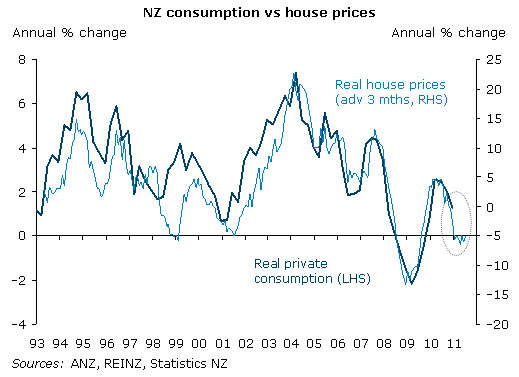
As you can see, the changes in New Zealand real private consumption has tracked the changes in real house prices very closely. And the recent decline in real house prices in New Zealand suggests that the rate of growth of real consumption will continue to fall for the next few quarters.
Further, since the global financial crisis (GFC) hit, and New Zealand house prices began falling in late 2007 (prices are currently down around 15% in real terms since their peak), annual real private consumption growth has been subdued, oscillating between only +2% and -2% over that period. This is a far cry from the heady days of 2002 to 2007, when annual real private consumption growth oscillated between +2% and +7% over that period, fuelled by high levels of home equity withdrawal (see below RBNZ chart).
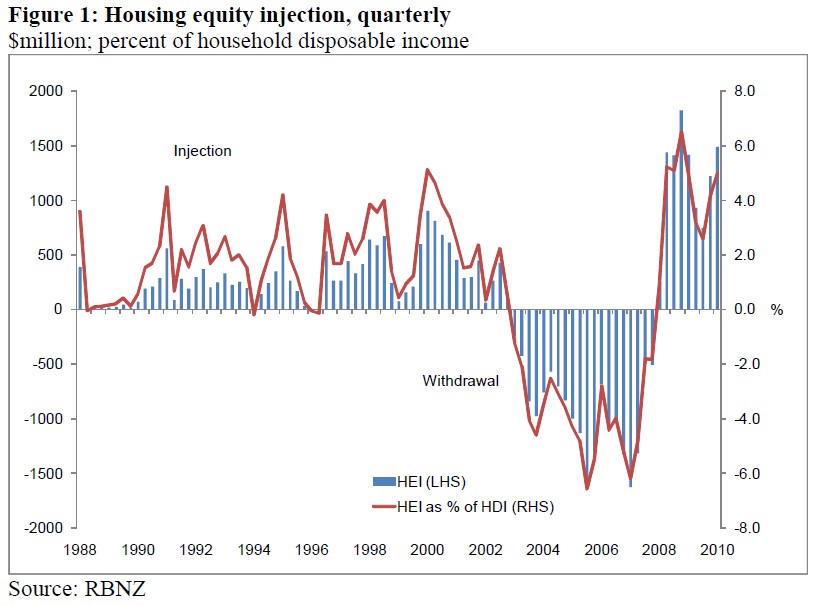
Clearly, the positive feedback loop “wealth effect” is in play in New Zealand. But what about the other countries referenced in my earlier article: the United Kingdom and Australia?
To gauge whether the same conditions are happening in these countries, I have attempted to re-create the above ANZ Bank consumption vs house prices chart.
First, the chart for the United Kingdom:
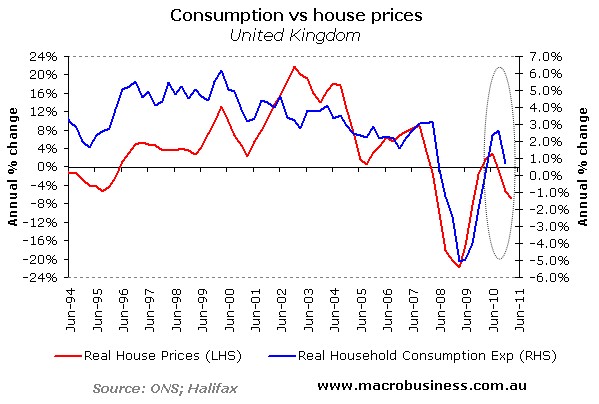
Granted, my chart is not as sexy as ANZ’s. But it still reveals a high correlation between changes in real house prices and changes in real household consumption expenditure, thereby suggesting that the wealth effect is in play.
Like New Zealand, since the GFC hit and United Kingdom house prices began falling from September 2007 (prices are currently down around 28% in real terms since their peak), annual real private consumption growth has been in a funk, oscillating between +2% and -5% over that period. Again, this is a far cry from the years prior to the GFC, when annual real private consumption growth oscillated between +2% and +4% over the 2000s, also fuelled by high levels of home equity withdrawal (see below Bank of England chart).
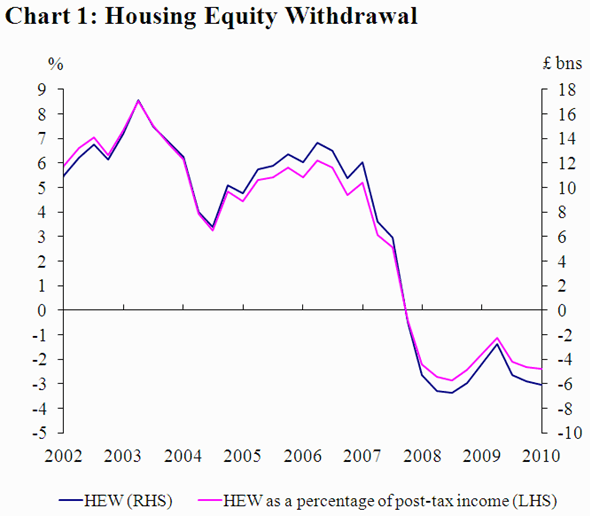
Now consider the chart of consumption vs house prices for Australia:
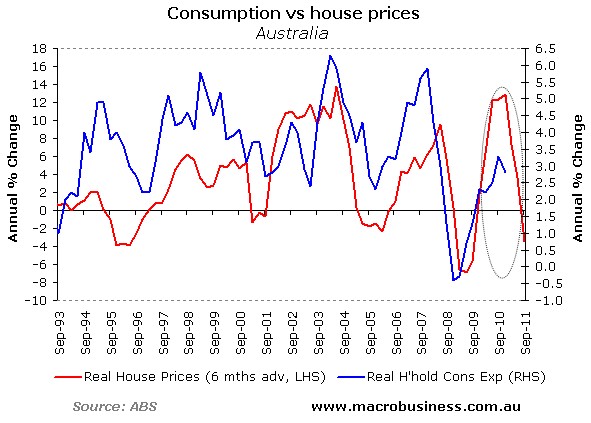
Like the other countries, the change in Australia’s real household consumption expenditure appears to have tracked the change in real house prices, although the relationship does not appear to be quite as strong as for New Zealand.
With Australian home values performing better in the wake of the GFC, real household consumption has also held-up better than the other countries over this period. However, it remains well below its pre-GFC levels, due in part to households shifting from withdrawing equity from their homes (borrowing) to repaying their mortgage debts (see below RBA chart).
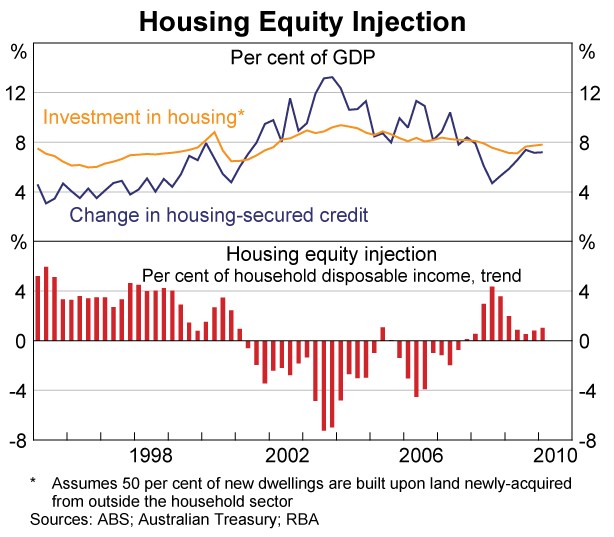
In what is an ominous sign for Australian retailers, the decline in real home prices over the past year has not been fully reflected in the household consumption figures, which have only just started to turn down from their post-GFC bounce (see above consumption vs house prices chart). If the recent correlation between home values and household consumption holds – and I see no reason why it shouldn’t – then Australian retailers could face several quarters of declining sales growth ahead.
And to make matters worse for retailing, Professor Steve Keen recently showed that mortgage credit growth usually leads house prices by up to six months. So with mortgage credit growth having fallen recently, Australia can expect at least two more quarters of negative house price growth, which should also depress household consumption and retail sales going forward.
The RBA has consistently described the apparent caution in the Australian consumer in terms of a mystery, as if they expect him/her to spring from a shroud and go crazy on the credit card at any moment. Without discounting the possibility that some of that discussion is aimed at jawboning consumers, the RBA may be underestimating its own power. Since 2009, it has explicitly brought house price growth to heel and, by extension, consumption in some degree.
Australian retailers hoping for a return to the heady sales growth of yesteryear might be in for a rude shock. Household consumption and retail sales are likely to remain subdued for the foreseeable future, thanks in no small part to household disleveraging and the sluggish state of the nation’s housing markets.
Cheers Leith

